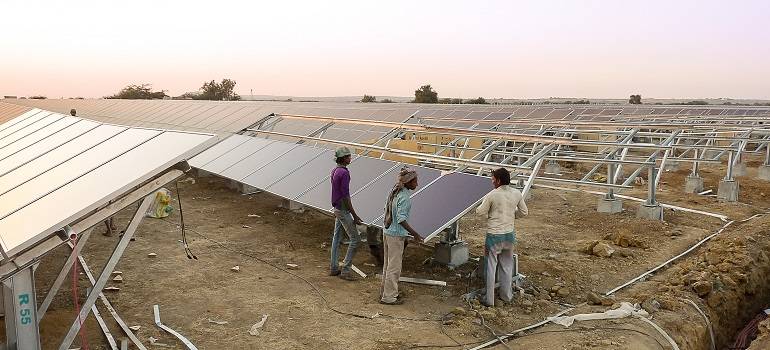Union Finance Minister Nirmala Sitharaman on Monday tabled 2021-22 budget in the parliament in the backdrop of a falling economy crushed by the COVID-19 pandemic.
Sitharaman in her Budget speech emphasised on the solar energy sector as part of the government’s larger focus on renewable energy.
She said “The past 6 years have seen a number of reforms and achievements in the power sector, we have added 139 Giga watts of installed capacity, connected an additional 2.8 crore households and added 1.41 lakh circuit km of transmission lines”
She announced customs duty hike on solar inverters and lanterns which would have an impact on the rooftop, ground-mounted projects and distributed renewable energy sector.
The Minister in the parliament said to encourage solar manufacturers, we are raising duty on solar inverters from 5 per cent to 20 per cent and on solar lanterns from 5 per cent to 15 per cent. A phased manufacturing plan for solar cells and solar panels will be notified to build up domestic capacity.
However, the government did not go ahead with its plan to impose basic custom duty on solar equipment across the board to boost domestic manufacturing. Solar Power Developers Association had urged the government to hold back its plan to impose basic custom duty (BCD) on solar equipment for time being in view of India”s ambitious target of having 175GW of renewables by 2022, which include 100GW of solar power.
According to the budget speech, exemption to all items of machinery, instruments, appliances, components or auxiliary equipment for setting up of solar power generation projects is being withdrawn.
The government had decided to infuse additional capital of INR 1,000 crore in Solar Energy Corporation of India and INR 1,500 crore in the Indian Renewable Energy Development Agency .
In her budget speech, Sitharaman also pointed towards the monopolies of distribution companies across the country and proposed to put in place a competitive framework to give consumers alternatives to choose from among more than one distribution companies.

